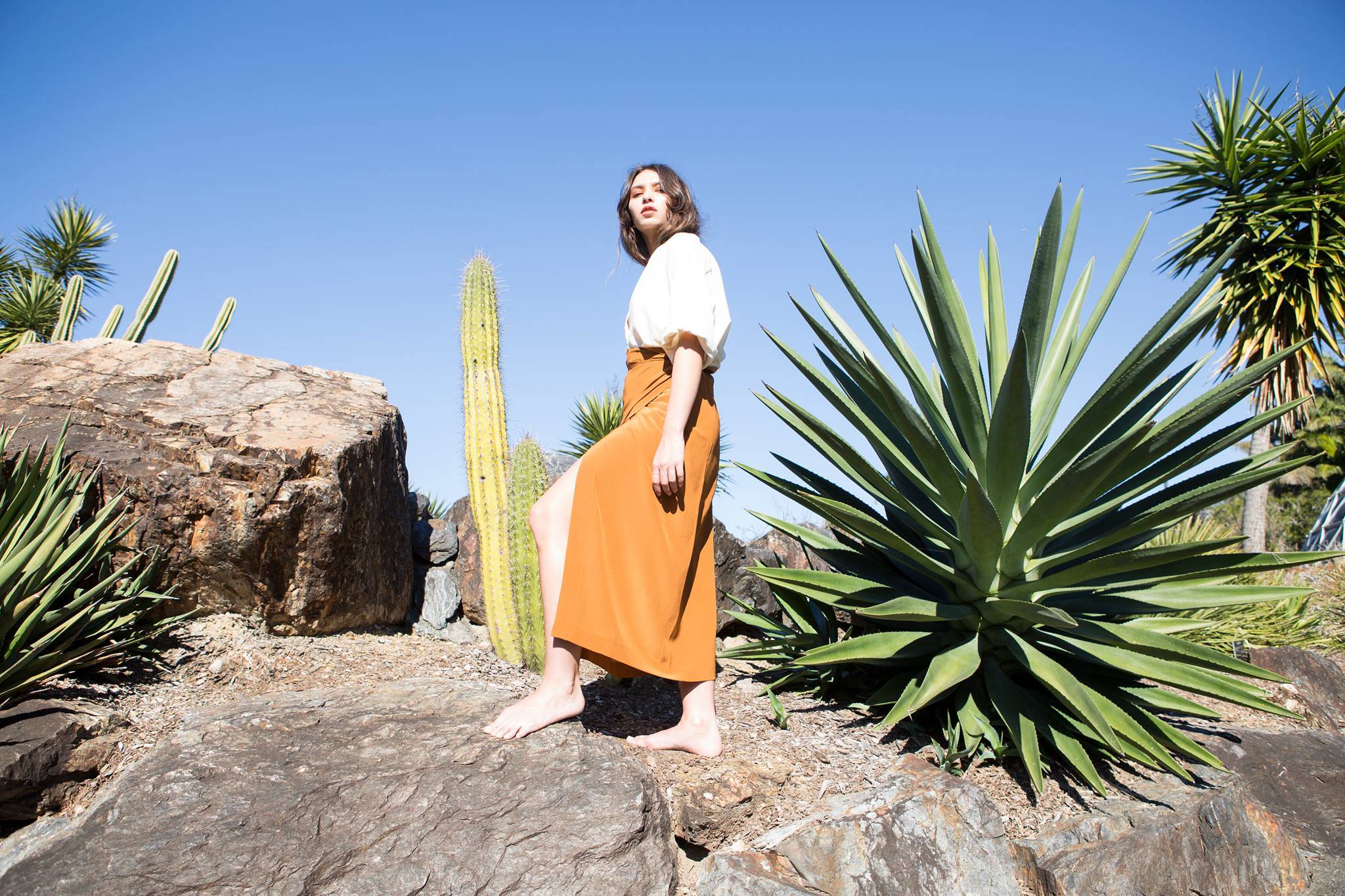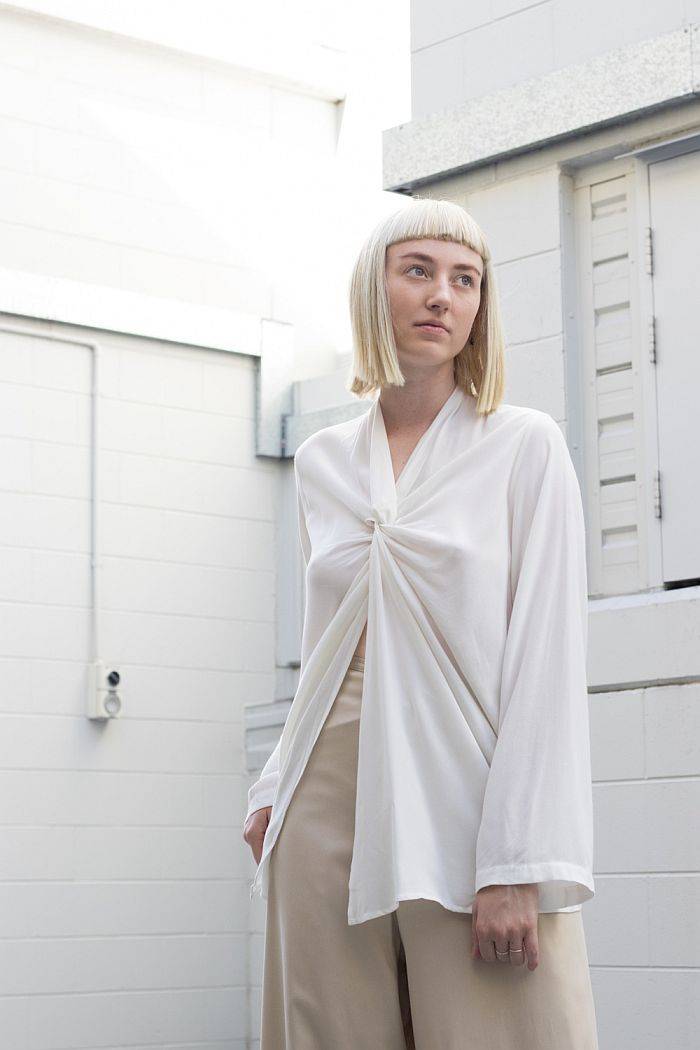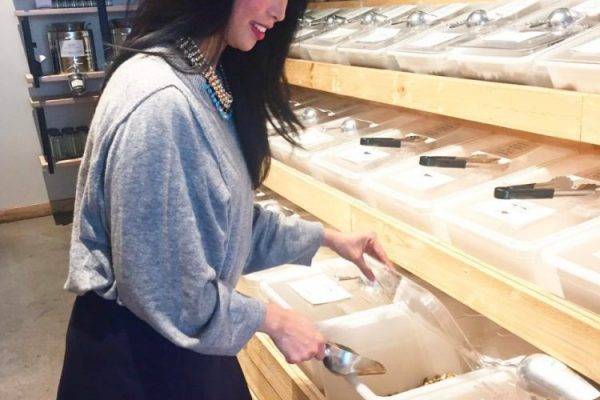Brought to you by Lagom Studio
Going into business with someone you met at a music festival may seem whimsical to some, but for Julia Mylne and Harrison Sanderman-Strewe, this is where Lagom Studio all began. It’s hearing stories like this you can’t help but wonder how some things are just meant to be.
It all started with a like-minded approach to minimalist design, a shared frustration by the lack of progress they were seeing in the fashion industry and a flair for being the vehicle for that change.

Long gone are the days of sustainable and ethical fashion resembling the tie-dyed rags of the 70’s
The duo is forging a new path for sustainable fashion. Their curated collection, Lagom Studio, brings together contemporary minimalist designers who reflect the change they’re advocating for in the industry.
Lagom is a Swedish word loosely translated to mean achieving balance by having ‘just enough’.
JUST ENOUGH
Scandinavian design has made a name for itself as the pin-up child of minimalist and functional style. This undertone is reflected in the Lagom Studio collection. Which is why it’s only fitting the very inspiration for their brand name came from the Swedish term, “Lagom.”
Julia explains, “We came across the word ‘Lagom’ and it summed up our identity perfectly. Lagom is a Swedish word loosely translated to mean achieving balance by having ‘just enough’. The value of ‘just enough’ can be compared to idiom ‘less is more’. As a concept it is popularly viewed as a sustainable alternative to the hoarding extremes of consumerism. In a single word, Lagom is said to describe a psyche of consensus and equality.”
Drawing inspiration from art, architecture and nature, Lagom represents a new era of minimalist style with an aesthetically pleasing edge. This has been achieved all while respecting the production process from start to finish. Special consideration is given from thread to thread and through each set of hands the garment passes.


SLOWING DOWN
What Lagom encourages is a form of ‘slow fashion.’ By offering an alternative to the pervasive fast fashion trend and challenging consumers to think about the longevity of their purchases, they in turn, are shining light on the questions of ethical and sustainable production.
Quite simply, as Julia puts it, “We want to encourage more people to purchase fewer but more quality items that stand the test of time. It’s time we reject the disposable nature of the fast fashion cycle.”
By our very nature, humans are a consumerist species. Mull over this for a while and it’s a rather depressing reality. But it’s one we can take ownership of.
Julia goes on to explain, “The act of consumption is not the problem. As humans we need to consume to some degree. However, we believe that material possessions should serve a purpose in your life, and appropriate value should be given to those possessions. If you constantly purchase things that serve no purpose in your life and weigh you down, both physically and mentally, then that is when it becomes a problem.”
In our consumption, we can make better choices. Ones that don’t lead to further destruction, exploitation of earth and her resources, and the ill-treatment of our fellow humans.
Julia’s advice for people new to the concept is sound.
“When we talk about fashion and minimalism, we believe it’s best to start small. We find that it can be useful to ask yourself before purchasing something if you envisage wearing it a minimum of 10 times. Mentally go through your wardrobe at home. Furthermore, ask yourself how many outfits could you match that item with. Is this something you will only wear once, or could you wear this over and over again?”
CHALLENGING THE NORM
While in theory it’s easy to say all this, the practical application involves chipping away at years of conditioned consumerist behaviour.
The challenges Lagom have faced along the way are reflective of the cultural shift that still needs to occur on a larger scale.
“One of the biggest challenges is changing the consumer’s perception of what the true cost of fashion should be. The fast fashion industry has invested a lot of money and resourcing into convincing consumers that fashion is both cheap and disposable.”
Years of this conditioning proves a challenge for labels like Lagom, offering a more holistic alternative, to gain a foothold against the fashion giants. For many years, consumers have been shielded from witnessing, or even getting a glimpse, of how their garments are made and at what cost.

“We understand it is hard for consumers to choose between spending $5 on a t-shirt to spending upwards of $50. It is difficult to re-connect people with the clothing they purchase. We are confident though that there has been a considerable shift in consumer behaviour. Many consumers are now understanding that others shouldn’t have to die just so they can buy that $5 t-shirt.”
Lagom exclusively stocks labels that meet a range of certified categories integral to the central ethos of their studio. They advocate for the fair treatment of all workers along the production line. Furthermore, their pieces reflect a commitment to sourcing materials that have been produced ethically and sustainably. And not least, they support artisans in their traditional techniques and trades.
Consensus and equality. Such is the Lagom way.


